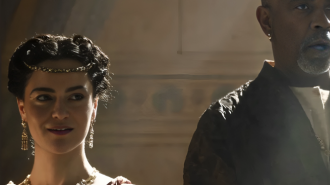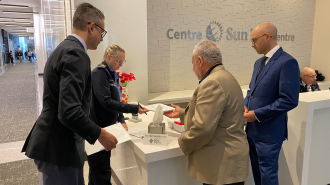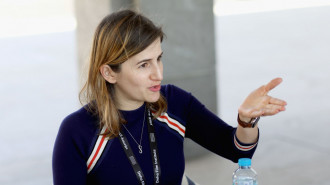
New London exhibition uncovers how paper played an integral role in the development of Zaha Hadid's architectural designs

When we think of Zaha Hadid as an architect, some might remember a time when she was dubbed the 'paper architect.'
This nickname arose because her bold designs were once considered impossible to build.
However, Zaha proved her critics wrong and is now known as a world-class architect, earning the nickname 'Queen of the Curve' for her smooth, complex designs.
Following Zaha's passing in 2016, the world has not forgotten her. Her legacy has been honoured through a deeper exploration of her work, revealing new insights that were previously less evident.
Recently, the significance of paper in Zaha's design process has been recognised, particularly in three major museum projects: Lois & Richard Rosenthal Center for Contemporary Art (CAC) in Cincinnati, USA (1997-2003); MAXXI: Museum of XXI Century Arts in Rome, Italy (1998-2009); and the Museum of Islamic Art in Doha, Qatar (1997, unrealised).
Interestingly, these projects relied on paper reliefs to help transition her ideas from sketches to actual curved structures, with employees of Zaha Hadid Architects (ZHA) working on these designs.
In a conversation with The New Arab, Zaha Hadid Foundation (ZHF) Research Officer Catherine Howe discussed the crucial role that paper reliefs played in Zaha’s curved designs, particularly during a time when many architects were shifting to digital design tools.
“These models are important, especially because they were created during a time when design was moving from analogue to digital," Catherine explained.
"People began exploring how to model curved shapes in three dimensions as technology advanced. We’re investigating why these paper reliefs were produced during this period, especially in the late 90s and early 2000s, when ZHA was starting to move away from painting as their most important mode of presentation.”
Although the ZHF still does not have a definitive answer as to why paper reliefs were introduced into Zaha's design process, it is clear that this experimentation allowed her to gain confidence in blending various and unique elements into her innovative designs.
By the early 2000s, she was creating spaces that felt both full and open, clear yet undefined, consistently pushing beyond conventional angles and limits.
To help visitors appreciate this vital aspect of her work, the ZHF has opened an exhibition titled Zaha Hadid: Paper Museums at their gallery in Clerkenwell, London.
Photography by Eva Herzog
For those planning to attend the exhibition, here are the key highlights from the three museums that shouldn't be missed:
The Lois & Richard Rosenthal Center for Contemporary Art
The paper reliefs created for the CAC illustrate the building's layout from the street entrance through its galleries.
These reliefs reflect the avant-garde art movements that inspired Zaha, and their unique designs suggest the dynamic effects of digital animation.
Founded in 1939, the CAC was Zaha's first completed project in the United States, located at a busy corner in downtown Cincinnati, on the corner of Walnut and Sixth Street.
It was one of the first places in the country dedicated to contemporary visual arts, which was unusual at a time when most art centres were on the outskirts of cities.
The building's corner location led to the creation of two different but complementary façades.
The south façade, along Sixth Street, features a translucent surface that allows passersby to see the activities happening inside.
In contrast, the east façade on Walnut Street is designed as a sculptural relief, representing the negative shape of the gallery interiors.
When the CAC opened in 2003, it was more than just a new exhibition space. With this opening, Zaha became the first woman to design an art museum in the United States.
© Zaha Hadid Foundation
MAXXI: Museum of XXI Century Arts
The MAXXI paper relief is the largest piece in this exhibition, providing a unique perspective that offers an aerial view of the museum within its urban context.
Similar to the CAC, the paper relief created for this exhibition helps viewers explore the design of MAXXI, highlighting how the space connects its galleries to the outdoors.
This bird's-eye view of the site, which combines multiple perspectives like Hadid's gravity-defying paintings, reveals the museum's dynamic form.
That said, if people were to look more closely at the MAXXI building, rather than the paper relief, they would see how Zaha Hadid's ideas about the connection between a museum and the city have evolved.
Her winning design responds to the L-shaped site, where two different city grids meet. Lines run parallel, converge, and curve, reflecting Zaha's famous question: “There are 360 degrees, so why stick to one?”
Photography by Eva Herzog
Museum of Islamic Art
Although Zaha's Museum of Islamic Art was never built, the exhibition gives viewers an idea of what it would have looked like.
The museum's design reflects the dunes and waves of Qatar’s natural landscape, especially seen in its undulating roof. The curved shapes also help shape the interior and the building’s relationship to its seafront site.
It’s no surprise that, given the name of the museum, Zaha and ZHA created a design based on Islamic patterns, focusing on both repetition and variation.
They drew inspiration from Islamic art and architecture, particularly the use of repeating patterns and the common presence of courtyards (Al-Finas) in buildings and urban planning.
While ZHA was one of six invited to compete for the museum design, the project was ultimately constructed by I.M. Pei after an initial selection of a design by Rasem Badran.
Zaha's signature concepts
Like every architect, Zaha had her unique ideas and this exhibition helps us understand her signature concepts.
One key concept we learn about is Zaha's 'urban carpet,' which refers to her approach to integrating the fabric of the city within the museum's walls.
This idea modernises Frank Lloyd Wright’s ramp design, allowing for both horizontal and vertical movement.
The concept is seen in the CAC; for example, the ground curves upwards as it enters the building, transforming into a back wall that welcomes visitors to the lobby. This 'urban carpet' guides them up a suspended mezzanine ramp, creating a bright and open space.
Another intriguing concept discovered at this exhibition is the 'jigsaw puzzle,' evident in the CAC gallery, where the spaces above are designed in various shapes and sizes. Even the lighting and interiors are arranged to create unique intersections.
Zaha proves anything is possible
As visitors conclude their tour, it’s hard not to be in awe of Zaha’s work. She designed buildings that, at first glance, seem impossible and overly complex.
Her creativity illustrates that anything is possible; for instance, who would have thought she would incorporate eclectic design references such as Xerox copies of orange peels and pasta to produce a swirling structure connecting the two floors of the Monsoon restaurant in Japan?
While the exhibition is still ongoing, Catherine hopes it will inspire visitors to think differently about architecture.
“I hope this exhibition encourages people to view architectural projects from fresh perspectives, rather than simply focusing on the buildings themselves,” she tells The New Arab.
Jane Pavitt, Head of Research and Learning at the ZHF, adds, “Paper Museums shines a spotlight on a form of architectural model making that is both beautiful and unusual.
"It’s a special type of object in our collections, which we wanted to draw attention to. We hope the exhibition inspires and excites people to think about Zaha’s work in new ways.”
The exhibition runs until 16 November and ZHF will host guided public tours every Thursday from 1:00 PM to 1:30 PM until 14 November 2024.
Zainab Mehdi is The New Arab's Associate Editor and researcher specialising in governance, development, and conflict in the Middle East and North Africa region
Follow her on X: @zaiamehdi




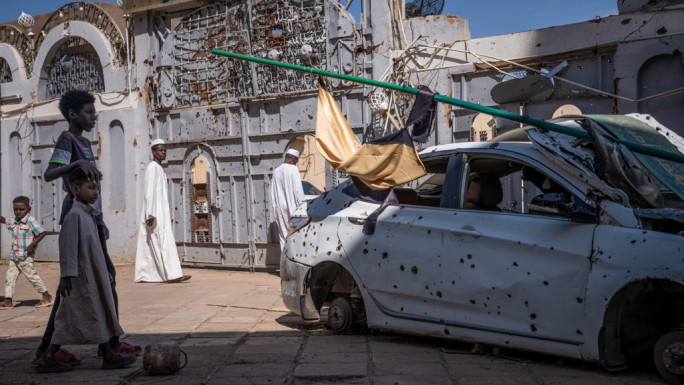
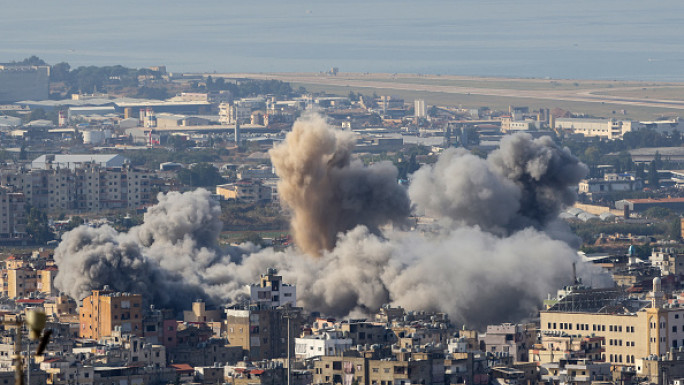
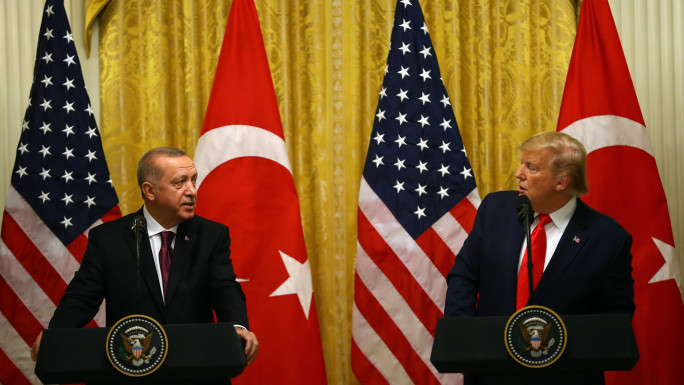



 Follow the Middle East's top stories in English at The New Arab on Google News
Follow the Middle East's top stories in English at The New Arab on Google News
